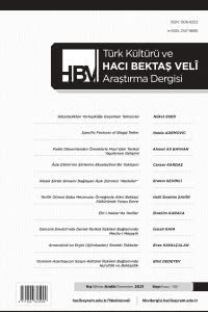Sivas Ali Baba Zaviyesi vakfı belgeleri
Ali Baba Zaviyesi 16.yüzyılda Sivas’ta kurulmuştur. Devrin hükümdarları ve hayırseverleri tarafından bağışlanan arazi ve diğer gelir kaynakları, zaviye Vakfı’nın oluşmasını sağlamıştır. Vakıf evladiyelik vakıf statüsünde olup, mütevellilik ve zaviyedârlık gibi yönetim işleri Osmanlı Devleti’nin sonuna kadar Ali Baba’nın evladından evladına devredilmiştir. Bu devir sürecinde, devlet ile vakıf arasında cereyan eden yazışmalar sonucu oluşan belgelerin bir kısmı, aile fertleri tarafından muhafaza edilerek günümüze kadar gelmeleri sağlanmıştır. Bu belgeler, gerek zaviyenin sosyal, ekonomik ve kültürel tarihini ve gerekse vakıflar bağlamında devlet-tekke ilişkisini aydınlatmada büyük önem taşımaktadır. Bu öneme binaen, zaviyeye ait belgelerin yayınlanması çalışmanın başlıca amacını oluşturmaktadır. Bu çerçevede günümüzde yaşayan aile fertlerinden temin edilen Osmanlı Türkçesiyle kaleme alınmış belgeler, öncelikle günümüz harflerine aktarılmıştır. Daha sonra da genel ve özel değerlendirmeleri yapılmıştır. Neticede eldeki kayıtlar ışığında bu sosyal ve dinî müessese tanımlanmaya çalışılmıştır.
Documents of Sivas zaviye of Ali Baba
Zaviye of Ali Baba was founded in the 16th century in Sivas. The land and other sources of income donated by the emperor and philanthropists of the age allowed the constitution of the foundation of the zaviye. The foundation is in the status of an heirloom and until the end of the Ottoman Empire, administrative and maintenance affairs (responsibilities) were transferred from the descendents to descendents of Ali Baba. During this transference process, some of the documents occurred as a result of the correspondences between the foundation and the government (state) were saved by the members of the family and could reach the present day. These documents have great importance in revealing both the social, economic and cultural history of the zaviye and the state-tekke relationships in terms of the foundations. With regard to this importance, the publication of the documents belonging to the zaviye is the purpose of this study. In this context, the documents written in the Ottoman Language obtained from the family members were primarily translated (transcribed) into modern Turkish (current alphabet). Later, their global and specific interpretations were made. Finally, under the light of these documents, this religious and social institution was tried to be defined.
